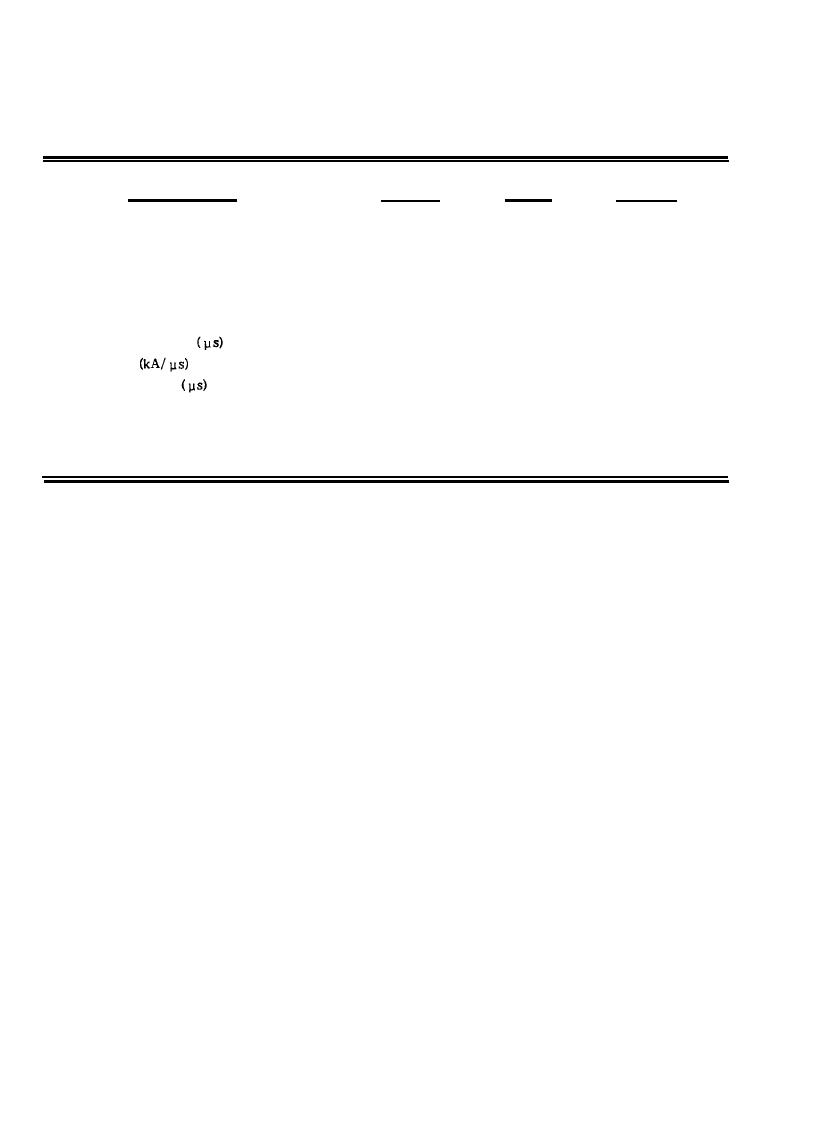

Custom Search
|
|

|
||
 MIL-HDBK-419A
Table 3-1
Range of Values for Lightning Parameters (3-5)
Parameter
Minimum
Maximum
Typical
Number of return strokes per flash
1
2 to 4
26
Duration of flash(s)
0.03
0.2
2
Time between strokes (ms)
3
40 to 60
100
Peak current per return stroke (kA)
1
10 to 20
250
Charge per flash (C)
1
15 to 20
400
Time to peak current
<0.5
1.5 to 2
30
Rate of rise
<l
20
210
Time to half-value
10
40 to 50
250
Duration of continuing current (ms)
50
150
500
Peak continuing current (A)
30
150
1600
Charge in continuing current (C)
3
25
330
Because of the duration of the currents that flow for the extended intervals between return strokes, they are
most likely to cause damage by melting or igniting solid materials. In contrast, the short-duration high-current
peaks tend to tear or bend metal parts by the electromagnetic forces that develop in proportion to the square
of the instantaneous current. Though potentially hazardous, the damage caused by mechanical forces in
metallic conductors is generally of secondary importance in most situations. However, because of the presence
of these mechanical forces, it is necessary that lightning rods, down conductors, and other elements of the
protection system be securely anchored.
On the other hand, when insulating or semi-insulating material receives a discharge, an explosive reaction may
occur with severe damage. Trees, for instance, whether dry or green, are in many cases split or stripped of
their bark, and the damage can extend underground to their roots. Related damage may occur to other
unprotected wooden structures or objects such as flag poles, masts, or light supports, and electric and telephone
poles. When lightning strikes a wooden building, the stroke seeks out the lowest impedance path to earth which
is probably through the electric wiring or water pipes. Often in order to reach these metallic paths, the
discharge must pass through some type of wooden barrier. In penetrating such barriers, extensive explosive
damage usually results.
Brick, concrete, marble, and other masonry materials are also frequently shattered or broken loose at the point
where the discharge passes through them. Such damage will occur where structural steel support members or
steel reinforcing rods are encased in concrete or sheathed in brick or marble and the structure has an
inadequate protective system. The explosive effect can dislodge materials with considerable force -- force
sufficient to hurl relatively large pieces several meters. One explanation of the explosive force is that it is the
result of the virtually instantaneous vaporization of the water present in the wood or entrapped in the masonry
materials.
3-16
|
 
|
|
 |
||